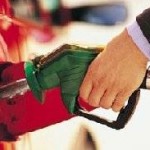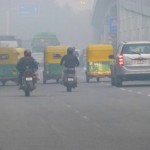
Water – Facts & Figures
“Global water stocks are in decline and demands on them are growing. Water scarcity is becoming a global phenomenon that will challenge the security of nations. Addressing this gap provides an opportunity for investments and for water to become a major economic sector in a Green Economy,” says the preview report.
Water supply is expected to be 40 per cent less than what will be needed in terms of demand by 2030 if there are no improvements in the efficiency of water use.
It argues that attaining the Millennium Development Goals as they relate to water and sanitation would lead to global economic gains of nearly US$750 million a year as a result of less working days lost to illness among adults.
Improved access to water and sanitation would also lead to global gains of US$64 billion linked to less time spent accessing such services.
Investments are needed in not only increasing supply through low cost measures such as rainwater harvesting but also through reforms of the sector and investments in ecological infrastructure including forests and wetlands that perform important hydrological functions.
The report cites an innovative policy and ‘micro-infrastructure’ development in Western Jakarta, Indonesia.
Here, a private utility called Palyja is providing water to informal homes via community-based organizations with water connection support from the NGO MercyCorps and USAID’s Environmental Service Programme.
The community signs a supply contract with the water company which in turn supplies water to multiple households via a single community metre at discount prices.
“The community gets reliable access to an affordable water supply, while Palyja supplies a large number of houses with water at much lower overhead and administrative costs,” says the Green Economy preview report.

Green Economy – Transport
The environmental, social and economic impacts of transport can amount to around 10 per cent of a country’s GDP, according to the preview report.
- Transport currently consumes more than half of global liquid fossil fuels;
- Transport emits nearly a quarter of the world’s energy related CO2 and generates more than 80 per cent of developing country cities’ local air pollutants;
- More than 127 million fatal traffic accidents, mainly in developing countries, are linked with transport;
- Chronic congestion is resulting in time and productivity losses.
Unless urgent action is taken to seize a different development and investment path, these costs will grow as the global vehicle fleet climbs from around 800 million to between two and three billion by 2050.
The report cites multiple choices countries and cities can make, including investment in public and non-motorized transport; alternative fuels and a substitution of physical transportation with telecommunications technology.
The Green Economy report says the stimulus packages, triggered by the financial crisis of 2008-2009, have begun a shift towards green transport.
- Transport is one of the major recipients of this extra spending amounting to roughly 12 per cent of the just under US$3.2 trillion spent by all surveyed Governments.
- Of this, rail and public transport represent 45 per cent; low carbon vehicles, five per cent; roads 33 per cent and airports, 14 per cent-in other words 50 per cent of the global transport stimulus spending could be termed ‘green’.
“Funding for non-motorized transport such as sidewalks and bicycles is explicitly mentioned in the stimulus packages of the Republic of Korea and Norway,” says the preview report.
Notes:
The Green Economy preview report, including draft conclusions from the full report to be published later in the year, builds on the Global Green New Deal/Green Economy Initiative launched in 2008.
The preview report had been a contribution to the Rio+20 Preparatory Committee meeting that took place at the UN Headquarters in New York 17-19 May 2010.
The preview report can be accessed at www.unep.org/greeneconomy














